India & Nepal
12 NIGHTS /13 DAYS FROM $1,776OVERVIEW OF YOUR INDIA TOUR
Bains Travel is proud to be your India Tour Specialists since 1951! Book an India and Nepal Tour with us or any other India Tour and we can help with your flights, transfers, insurance, and anything else you may need to make your India Tour the trip of a lifetime.
Our India Tour specialists are available for in-person discussions in Vancouver, Surrey, Abbotsford, and Mississauga (serving the Toronto area). Or, just pick up the phone from anywhere in the U.S. or Canada and one of our India Tour Specialists will customize any India Tour package just for you! Interested in putting a group together? No problem, we are your one-stop-shop for everything in India!
All of our India tours include a chauffeur-driven vehicle, superior accommodation, some meals, and a local guide. We offer 4 and 5-star accommodation and compact, luxury and SUV vehicles. All tours can be customized to your specific preferences. Please call for pricing and availability.
DAY 1 - ARRIVE DELHI
Meet and assist upon arrival and transfer to the hotel. Check-in at the hotel.
Overnight at the hotel.
DAY 2 - IN DELHI
Breakfast at the hotel
Proceed for the full-day city tour of Old & New Delhi. In Old city visit Red Fort built by Emperor Shah Jahan; Jama Masjid, one of the largest mosques in India; Raj Ghat– the memorial of Mahatma Gandhi and enjoy a walking tour in Chandni Chowk – the silver street of Delhi bustling with activity.
In the afternoon visit Qutab Minar, the tallest stone tower in India; Humayun’s Tomb built in the Indo Persian style and a predecessor to The Taj Mahal in Agra; India Gate – A War Memorial Arch. Also, drive past the President’s house, Parliament House, Government secretariat buildings and Connaught place – the heart of New Delhi and a busy shopping center.
Overnight at the hotel.
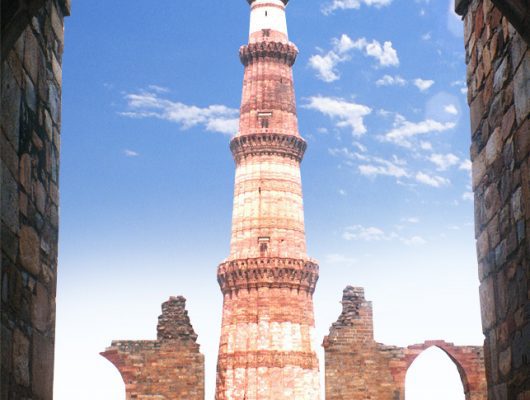
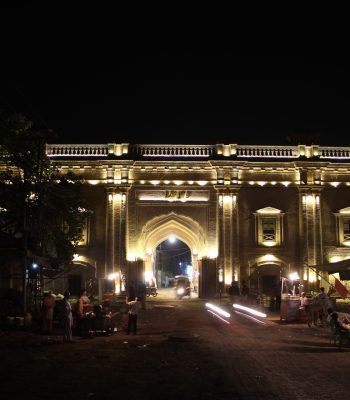
DAY 3 - TO JAIPUR
Breakfast at the hotel
After breakfast check-out of the hotel and drive to Jaipur
Check-in at the hotel upon arrival. The capital of the state of Rajasthan is popularly known as the ‘pink city’ as the buildings in its old, walled city is all constructed in pink-coloured sandstone. Jaipur owes its name, its foundation and its careful planning to the great warrior astronomer Maharaja Jai Singh II (1699-1744). He laid out the city with its surrounding walls and six rectangular blocks by principles of town planning set out in an ancient Hindu treatise on architecture. In 1728 he constructed the remarkable observatory, which is still one of Jaipur’s central attractions.
It is worthwhile spending any leisure time wandering through the bazaars. Jaipur is well known for its beautiful carpets, enamelled ornaments, precious and semi-precious stones, brass ornaments and many other arts and crafts.
Overnight at the hotel.
DAY 4 - IN JAIPUR
Breakfast at the hotel
This morning you will drive 11kms in the outskirts of the city to visit Amber Fort, the ancient capital of the State until 1728. Visit the Temple of Kali, the Hall of Victory or Jai Mahal and Jagmandir. You can have the unique experience of travelling on an elephant back to and from the top of the hill on which the fort is situated.
In the afternoon visit the Observatory, the Palace of Winds and the City Palace and Museum. The museum has an interesting textile section, which contains dresses and costumes of the former Maharajas and Maharanis of Jaipur. Return to the hotel for an overnight stay.
The rest of the day is free to explore the colourful town independently. Spend time in crowded lanes & by lanes of the pink city, haggling and souvenir-hunting.
Overnight at the hotel.
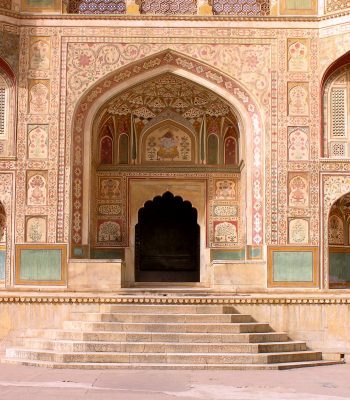

DAY 5 - JAIPUR TO AGRA VIA FATEHPUR SIKRI
Breakfast at the hotel
Post breakfast, drive to Agra visiting the ancient abandoned Moghul capital, Fatehpur Sikri. This 16th century capital of Moghul emperor Akbar is a complex of forts, palaces and mosques built in sandstone. The city had to be deserted because of a lack of water. The white marble Tomb of Sheikh Salim Chisti, Akbar’s spiritual adviser, is now observed as a Muslim pilgrimage spot here.
Then continue your drive of approximately 45 min. to Agra. On arrival check-in at the hotel.
Overnight is at the hotel.
DAY 6 - IN AGRA
Breakfast at the hotel
Later visit of Agra Fort and Taj Mahal
Agra Fort, which stands like a crescent on the banks of the Jamuna River enclosed by forbidding 20-meter high walls, with a 12- meter moat between them. Three successive Mughal emperors – Akbar, Jehangir and Shah Jehan – helped create this massive structure that contains Hindu and Muslim architecture. Then proceed for the famous white marble mausoleum, which was built in the middle of the 17th century by the Moghul emperor Shah Jehan for his wife Mumtaz Mahal.
Visit the Taj Mahal surely the greatest monument to love and one of the wonders of the modern world. Completed in 1652, skilled craftsmen from Persia, Turkey, France and Italy and some 20,000 labourers worked for 17 years to build this edifice, constructed by emperor Shah Jehan as a mausoleum for his beloved queen Mumtaz Mahal. Marble was brought from Makrana, near Jodhpur and precious stones of onyx, amethyst, malachite, lapis lazuli, turquoise, jade, crystal and mother of pearl were carried to Agra from Persia, Russia, Afghanistan, Tibet, China and the Indian Ocean.
Later return back to your hotel.
Rest of the day free for independent activities.
Overnight at the hotel.
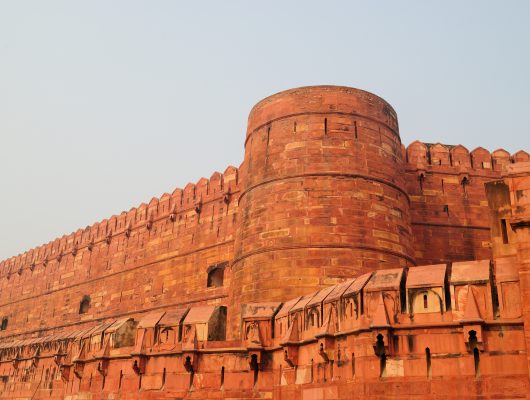
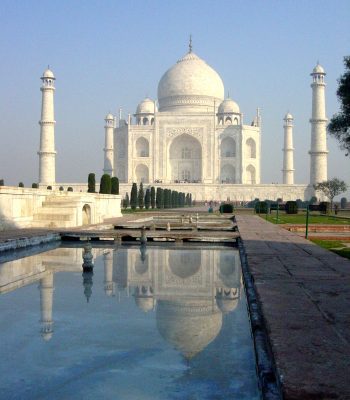
DAY 7 - TO KHAJURAHO
Morning transfer to the Agra Cantt railway station to board Shatabdi train to Jhansi.
On arrival in Jhansi, assisted transfer to Khajuraho, En-route visiting Orchha.
Orchha is a town in the Tikamgarh district of Madhya Pradesh state, India. The town was the seat of an eponymous former princely state of central India, in the Bundelkhand region. Orchha lies on the Betwa River, 80 km from Tikamgarh & 15 km from Jhansi.
On a seasonal island on the bank of the Betwa River, which has been surrounded by a battlement wall, stands a huge palace-fort. The fort consists of several connected buildings erected at different times, the most noteworthy of which are the Ram Raja Temple and the Jahangir Mahal.
The Ram Raja Temple is built on a square base and has an almost entirely plain exterior, relieved by projecting windows and a line of delicate domes along the summit. The Jahangir Mahal is built on a rectangular base and is relieved by a circular tower at each corner surmounted by a dome, while two lines of graceful balconies supported on brackets mark the central story. The roof is crowned by eight large fluted domes, with smaller domes between them, connected by an ornamental balustrade. The Jahangir Mahal is considered to be a singularly beautiful specimen of domestic Hindu architecture.
Later continue your drive to Khajuraho.
Khajuraho town in Madhya Pradesh is one of the most popular tourist destinations in India. Khajuraho has the largest group of medieval Hindu and Jain temples, famous for their erotic sculpture. The Khajuraho group of monuments has been listed as a UNESCO World Heritage Site and is considered to be one of the “seven wonders” of India.
On arrival in Khajuraho, check-in at your hotel.
Overnight at the hotel.
DAY 8 - TO VARANASI
Breakfast at the hotel.
Eastern & Western group of temples. The magnificent temples built by the Chandela kings. They are divided into three – eastern, western and southern groups. The largest temple is Kandariay dedicated to Lord Shiva. The temples known for their erotic sculpture are world-famous.
Later transfer to the airport to board flight for Varanasi. On arrival in Varanasi assisted transfer to the hotel
Varanasi picturesquely situated on the crescent-shaped left bank of the holy Ganga, Varanasi, one of the ancient seats of learning in India, is said to be a compound of the names of two streams, the Varuna and the Assi, which still flow in the north and south of the city respectively. Varanasi is probably one of the most ancient living cities in India. From time immemorial it has been a great religious center for Hindus and one of their most sacred places of pilgrimage, being visited by millions of people every year.
Visit the River Ganges in Varanasi to witness the evening Aarti and pooja.
Overnight at the hotel.
DAY 9 - IN VARANASI
Early in the morning, enjoy a boat ride on the River Ganges. The most important facet of this holy city is the river and the ghats lining its southern bank in the city. From dawn to dusk, the ghats are thronged by thousands of devotees, who perform their holy rituals in the hope of attaining salvation, the “Nirvana”. Later also visit temples like Kashi Vishwanath temple – dedicated to Lord Shiva; Bharat Mata Mandir – dedicated to Mother India; Durga temple – dedicated to Goddess Durga; Alamgir mosque – originally a temple dedicated to Vishnu but now an odd mixture of Hindu and Muslim architectural styles
In the afternoon proceed for a guided excursion to Sarnath – where Lord Buddha preached his first sermon. A major Buddhist centre, Sarnath lies 10 kilometres northeast of Varanasi. It was here that Buddha preached his message of the ’middle way’ to nirvana after achieving enlightenment at Bodhgaya. In around 234 BC, Emperor Ashoka, a great follower of Buddhism, erected a stupa here.
Between the 3rd century BC and the 11th century AD, several Buddhist structures were built here in Sarnath. Most of Sarnath’s monuments are set in large gardens making it quite pleasant for a visitor to spend some time here.
Overnight at the hotel.

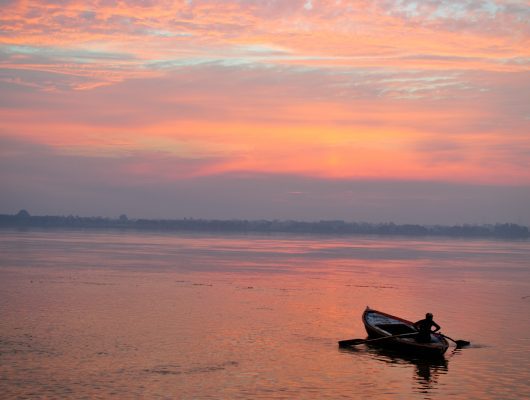
DAY 10 - TO KATHMANDU
Breakfast at the hotel.
Later, in time transfer to the airport to board your flight for Kathmandu.
Meet and assist upon arrival and transfer to the hotel for check-in.
Overnight at the hotel.
DAY 11 - IN KATHMANDU
Breakfast at the hotel
Morning proceeds with a tour of the city covering Hanuman Dhoka: this is the historic palace of the ancient kings of Nepal. A complex of many temples and monuments, guarded by a huge statue of the Monkey God, Hanuman, it has evolved to its present state of maturity over a period of centuries with contributions from a number of dynasties, headed by Malla Kings.
Also visit the Residence of the Living Goddess near Durbar Square, which is the residence of Kumari, the Living Goddess (virgin goddess). Its wooden balconies and windows are profusely carved. It was built in 1960 by King Jaya Prakash Malla. Later visit Swayambunath, said to be 2000 years old and one of the world’s oldest Buddhist chaityas. The stupa, which forms the main structure is composed of a solid hemisphere of brick and earth supporting a cornice of copper and gilt. Painted on the four sides based on the spire are the all-seeing eyes of Lord Buddha. Situated on a hillock it is about 250 feet high above the level of the valley.
Later stop at Pashupatinath Temple standing on the bank of the sacred Bagmati river with two-tier golden roof and silver doors. It is famous all over the world for its superb architecture. Entrance into the temple precincts is restricted to Hindus only. The temple of Pashupatinath is a center of an annual pilgrimage on the day of Shivaratri. Though only Hindus are allowed to go inside the courtyard of the temple, therein tourists and visitors can clearly see the temple and the activities from the eastern bank of the Bagmati River.
Finally, stop at Boudhanath stupa. This colossal and ancient Stupa is one of the biggest in the world. Four pairs of eyes of Buddha in four cardinal directions are keeping an eternal watch over the people and their doings.
Overnight at the hotel.
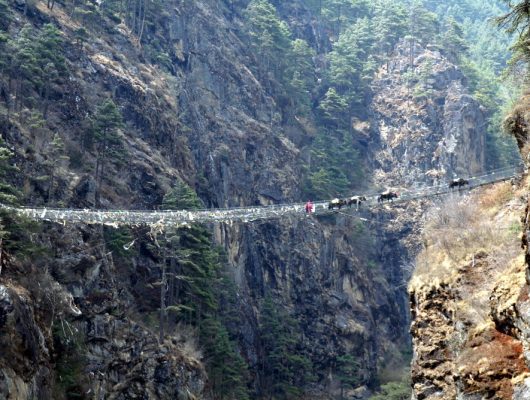

DAY 12 - IN KATHMANDU
Breakfast at the hotel.
After breakfast proceed with an excursion to Patan, indeed a city of beauty and grace. Planned on a circular format with Buddhist stupas (reliquary mounds) on the four points of the compass, the city is three miles southeast of Kathmandu city across the southern bank of the river Bagmati. Its most photogenic centre of attraction is the Durbar Square or the palace complex, which is situated right in the middle of the marketplace. It is a cluster of fine pagoda temples and stone statuaries.
The stone temple of Lord Krishna holds a commanding position in the palace complex of Patan. Though its style is not wholly native, it has been reckoned as one of the perfect specimens of the Nepalese skill in temple craft. The three-storeyed stone temple continues to elicit high praise from lovers of art and beauty. Located in the courtyard of Kwabahal, this temple belongs to a class by itself. A golden image of Lord Buddha and a big prayer wheel are placed on the pedestal of the upper part of the Vihar. Kumbheshwar is a five-storeyed pagoda-styled temple of Lord Shiva. Inside the courtyard is a natural spring having its source, as it is said in the famous glacial lake of Gosainkunda. This temple was built by King Jayasthiti Malla and the golden finial was added in 1422 A.D. The Jagat Narayan temple is a tall Shikara-styled temple consecrated to Lord Vishnu. The temple is built out of red brick on the bank of the Bagmati at Sankhamul. It enshrines many images in stone. The fine metal statue of Garuda placed on a stone monolith is quite eye-catching. The images of Garuda, Ganesha and Hanuman seated on stone pedestals are also worth seeing. Finally, the temple of Mahaboudha is a masterpiece of terracotta. Like the Krishna Mandir, it too reveals an art tradition, which was not evolved in Nepal. Yet like Krishna Mandir, it also does show that the native craftsmanship of the Nepalese can do proper justice to any form. It is sometimes described as the temple of million Buddhas because every brick contains a fine figure of the Buddha.
Return back to your hotel after the visit and spend the evening at leisure.
Overnight is at the hotel.
DAY 13 - TO DELHI
Breakfast at the hotel. Later transfer to Kathmandu airport to board your flight to Delhi. On arrival in Delhi, assisted transfer to the International airport.


